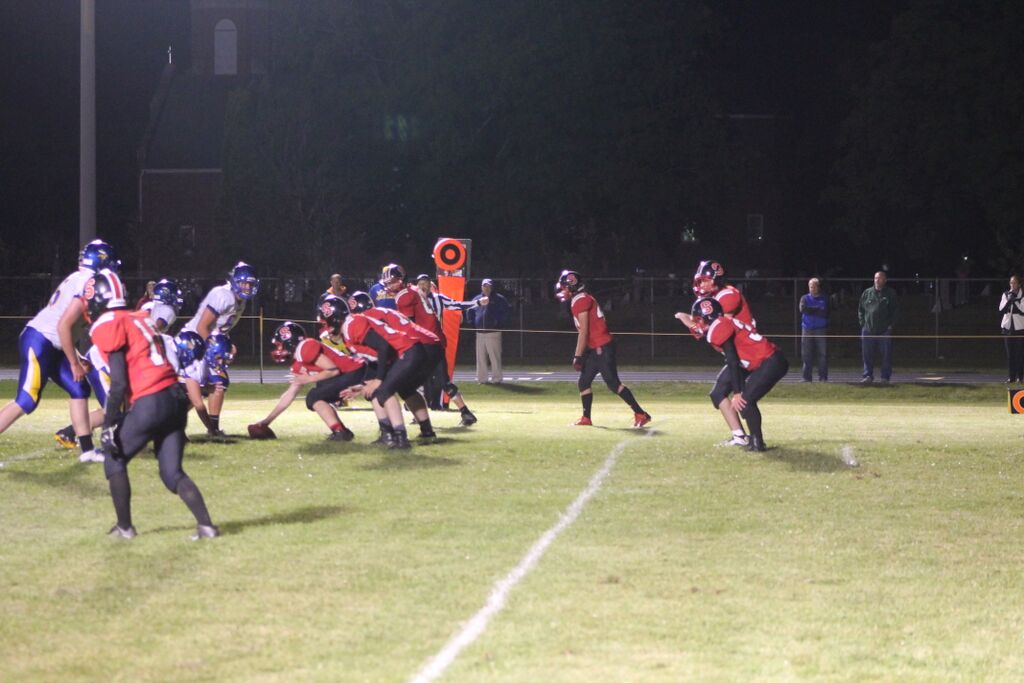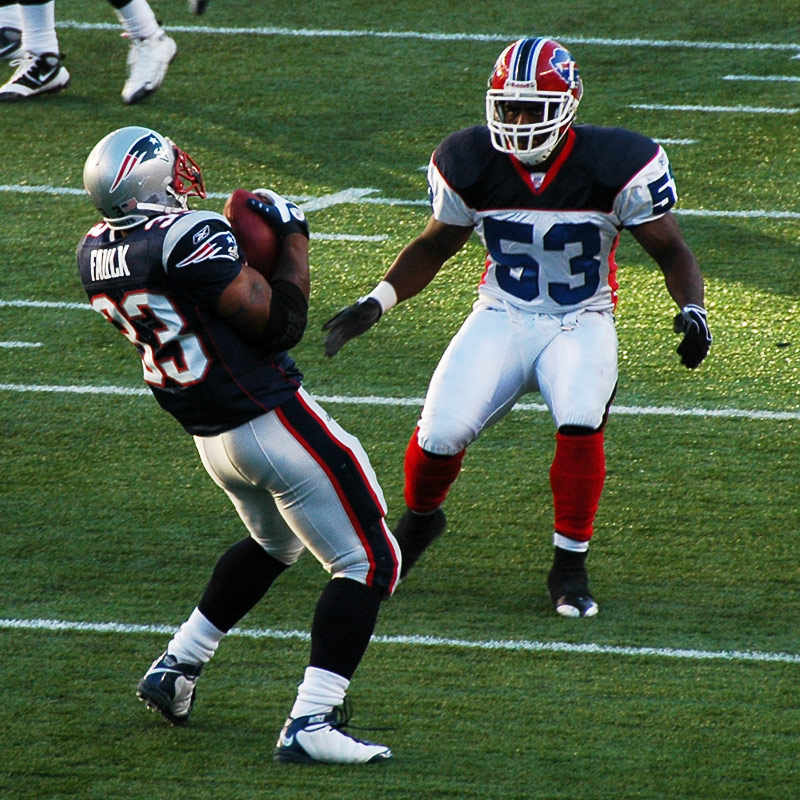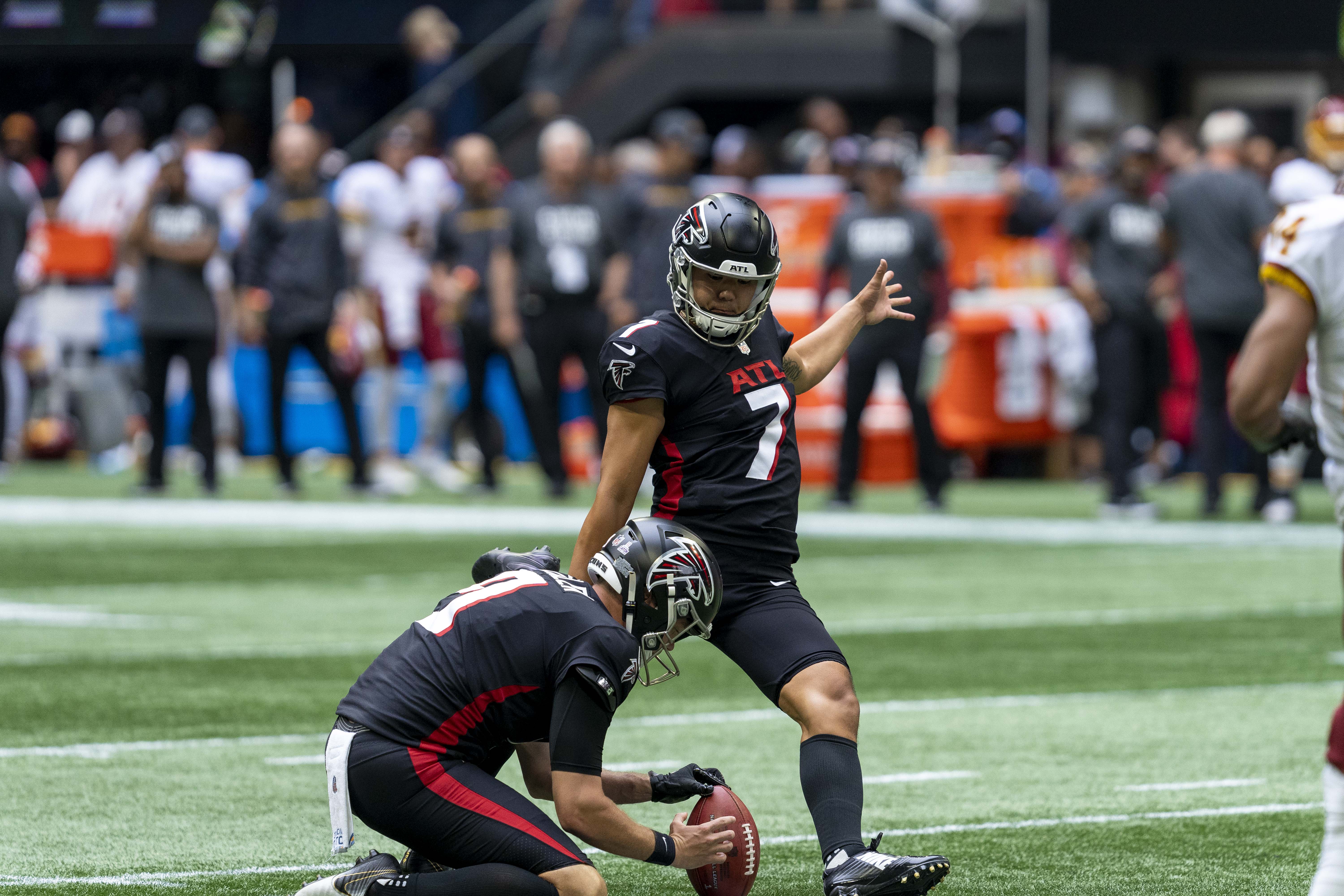|
Punt (gridiron Football)
In gridiron football, a punt is a kick performed by dropping the ball from the hands and then kicking the ball before it hits the ground. The most common use of this tactic is to punt the ball downfield to the opposing team, usually on the final down, with the hope of giving the receiving team a field position that is more advantageous to the kicking team when possession changes. The result of a typical punt, barring any penalties or extraordinary circumstances, is a first down for the receiving team. A punt is not to be confused with a drop kick, a kick ''after'' the ball hits the ground, now rare in both American and Canadian football. The type of punt leads to different motion of the football. Alex Moffat invented the now-common spiral punt, as opposed to end-over-end. Description A punt in gridiron football is a kick performed by dropping the ball from the hands and then kicking the ball before it hits the ground. In football, the offense has a limited number of downs, or ... [...More Info...] [...Related Items...] OR: [Wikipedia] [Google] [Baidu] |
Illegal Touching
In gridiron football, a penalty is a sanction assessed against a team for a violation of the rules, called a foul. Officials initially signal penalties by tossing a bright yellow colored penalty flag onto the field toward or at the spot of a foul. Many penalties result in moving the football toward the offending team's end zone, usually either 5, 10, or 15 yards, depending on the penalty. Most penalties against the defensive team also result in the offense receiving an automatic first down, while a few penalties against the offensive team cause them to automatically lose a down. In some cases, depending on the spot of the foul, the ball is moved half the distance to the goal line rather than the usual number of yards, or the defense scores an automatic safety. Rationale Because football is a high-contact sport requiring a balance between offense and defense, many rules exist that regulate equality, safety, contact, and actions of players on each team. It is very difficult ... [...More Info...] [...Related Items...] OR: [Wikipedia] [Google] [Baidu] |
Fumble
A fumble in gridiron football occurs when a player who has possession and control of the ball loses it before being downed (tackled), scoring, or going out of bounds. By rule, it is any act other than passing, kicking, punting, or successful handing that results in loss of ball possession by a player. A fumble may be forced by a defensive player who either grabs or punches the ball or butts the ball with their helmet (a move called "tackling the ball"). A fumbled ball may be recovered and advanced by either team (except, in American football, after the two-minute warning in either half or 4th down, when the fumbler is the only offensive player allowed to advance the ball, otherwise the ball is ruled dead at the spot of fumble, except when it is recovered for a loss. A fumble is one of three events that can cause a turnover (the other two being an interception or a turnover on downs). Under American rules a fumble may be confused with a muff. A muff occurs where a player dr ... [...More Info...] [...Related Items...] OR: [Wikipedia] [Google] [Baidu] |
High School Football
High school football (french: football au lycée) is gridiron football played by high school teams in the United States and Canada. It ranks among the most popular interscholastic sports in both countries, but its popularity is declining, partly due to risk of injury, particularly concussions. According to ''The Washington Post ''The Washington Post'' (also known as the ''Post'' and, informally, ''WaPo'') is an American daily newspaper published in Washington, D.C. It is the most widely circulated newspaper within the Washington metropolitan area and has a large nati ...'', between 2009 and 2019, participation in high school football declined by 9.1%. It is the basic level or step of tackle football. Rules The National Federation of State High School Associations (NFHS) establishes the rules of high school American football in the United States. In Canada, high school is governed by Football Canada and most schools use Canadian football rules adapted for the high scho ... [...More Info...] [...Related Items...] OR: [Wikipedia] [Google] [Baidu] |
Touchback
In American football, a touchback is a ruling which is made and signaled by an official when the ball becomes dead on or behind a team's own goal line (i.e., in their end zone) and the opposing team gave the ball the momentum, or impetus, to travel over or across the goal line but did not have possession of the ball when it became dead. Since the 2018 season, touchbacks have also been awarded in college football on kickoffs that end in a fair catch by the receiving team between its own 25-yard line and goal line. Such impetus may be imparted by a kick, pass, fumble, or in certain instances by batting the ball. A touchback is not a play, but a result of events that may occur during a play. A touchback is the opposite of a safety with regard to impetus since a safety is scored when the ball becomes dead in a team's end zone after ''that team'' — the team whose end zone it is — caused the ball to cross the goal line. The result of a touchback is that the team in whose endzone t ... [...More Info...] [...Related Items...] OR: [Wikipedia] [Google] [Baidu] |
Fair Catch
A fair catch is a feature of American football and several other codes of football, in which a player attempting to catch a ball kicked by the opposing team – either on a kickoff or punt – is entitled to catch the ball without interference from any member of the kicking team. A ball caught in this manner becomes dead once caught, i.e., the player catching the ball is not entitled to advance the ball, and the receiving team begins its drive at the spot where the ball was caught. Under NFL and NFHS rules, a team awarded a fair catch is also entitled to attempt a fair catch kick from the spot of the catch; however, this is rarely done. A player wishing to make a fair catch signals his intent by extending one arm above his head and waving it while the kicked ball is in flight. The main reason for a fair catch is to protect the receiver. Because the receiver has to direct his attention toward catching the airborne ball, he cannot focus on opponents running towards him and is usu ... [...More Info...] [...Related Items...] OR: [Wikipedia] [Google] [Baidu] |
Virginia Tech Hokies Block Punt Vs Duke
Virginia, officially the Commonwealth of Virginia, is a state in the Mid-Atlantic and Southeastern regions of the United States, between the Atlantic Coast and the Appalachian Mountains. The geography and climate of the Commonwealth are shaped by the Blue Ridge Mountains and the Chesapeake Bay, which provide habitat for much of its flora and fauna. The capital of the Commonwealth is Richmond; Virginia Beach is the most-populous city, and Fairfax County is the most-populous political subdivision. The Commonwealth's population was over 8.65million, with 36% of them living in the Baltimore–Washington metropolitan area. The area's history begins with several indigenous groups, including the Powhatan. In 1607, the London Company established the Colony of Virginia as the first permanent English colony in the New World. Virginia's state nickname, the Old Dominion, is a reference to this status. Slave labor and land acquired from displaced native tribes fueled the growi ... [...More Info...] [...Related Items...] OR: [Wikipedia] [Google] [Baidu] |
Field Goal (gridiron Football)
A field goal (FG) is a means of scoring in gridiron football. To score a field goal, the team in possession of the ball must place kick, or drop kick, the ball through the goal, i.e., between the uprights and over the crossbar. The entire ball must pass through the vertical plane of the goal, which is the area above the crossbar and between the uprights or, if above the uprights, between their outside edges. American football requires that a field goal must only come during a play from scrimmage (except in the case of a fair catch kick) while Canadian football retains open field kicks and thus field goals may be scored at any time from anywhere on the field and by any player. The vast majority of field goals, in both codes, are place kicked. Drop kicked field goals were common in the early days of gridiron football but are almost never done in modern times. In most leagues, a successful field goal awards three points (a notable exception is six-man football in which, due to the ... [...More Info...] [...Related Items...] OR: [Wikipedia] [Google] [Baidu] |
Muffed Punt
In gridiron football, a muffed punt is defined as "touching of the ball prior to possessing the ball.” A muffed punt occurs when there is an "uncontrolled touch" of the football by a player on the returning team after it is punted. This can occur when: * The kicking team interferes with the other team's right to catch the punt * A player on the kicking team is struck unaware by the football running down-field to cover the punt. * A player attempts to return the ball, makes contact with it but cannot retain the ball in his hands and it comes loose. To be a fumble, the receiving team must ''possess'' the football, then lose control. In the case of a fumble, the ball is live and can be returned by the team that recovers the ball. In the case of a muffed punt, it is possible for the punting team to recover the ball and continue the drive, but at least in NCAA and NFL rules, they cannot advance the ball on that same play. Rules vary by league League or The League may refer to: ... [...More Info...] [...Related Items...] OR: [Wikipedia] [Google] [Baidu] |
American Football Strategy
Strategy forms a major part of American football. Both teams plan many aspects of their plays (offense) and response to plays (defense), such as what formations they take, who they put on the field, and the roles and instructions each player are given. Throughout a game, each team adapts to the other's apparent strengths and weaknesses, trying various approaches to outmaneuver or overpower their opponent in order to win the game. Offensive strategy The goal of the offense is, most generally, to score points. In order to accomplish this goal, coaches and players plan and execute plays – based on a variety of factors: The players involved, the opponent's defensive strategy, the amount of time remaining before halftime or the end of the game, and the number of points needed to win the game. Strategically, the offense can prolong their possession of the ball to prevent the opponent from scoring. Offensive scoring chances, or drives, end when they cannot move the ball 10 yards or t ... [...More Info...] [...Related Items...] OR: [Wikipedia] [Google] [Baidu] |
Screen Pass
A screen pass is a play in gridiron football consisting of a short pass to a receiver who is protected by a screen of blockers. During a screen pass, a number of things happen concurrently in order to fool the defense into thinking a long pass is being thrown, when in fact the pass is merely a short one, just beyond the defensive linemen. Screens are usually deployed against aggressive defenses that rush the passer. Because screens invite the defense to rush the quarterback, they are designed to leave fewer defensemen behind the rushers to stop the play. Use A screen pass can be effective, but it can also be risky as it is rather easy for a defensive player, even a lineman, to intercept the pass if a defender gets between the quarterback and the intended receiver—something that only happens if the offensive line misses a block, the quarterback takes too long to throw or the defense overwhelms the offensive line. If the pass is intercepted, there are often few offensive players ... [...More Info...] [...Related Items...] OR: [Wikipedia] [Google] [Baidu] |
Eligible Receiver
In gridiron football, not all players on offense are entitled to receive a forward pass: only an eligible pass receiver may legally catch a forward pass, and only an eligible receiver may advance beyond the neutral zone if a forward pass crosses into the neutral zone. If the pass is received by a non-eligible receiver, it is "illegal touching" (resulting in a penalty of five yards and loss of down). If an ineligible receiver is beyond the neutral zone when a forward pass crossing the neutral zone is thrown, a foul of "ineligible receiver downfield" (resulting in a penalty of five yards, but no loss of down) is called. Each league has slightly different rules regarding who is considered an eligible receiver. College football The NCAA rulebook defines eligible receivers for college football in Rule 7, Section 3, Article 3. The determining factors are the player's position on the field at the snap and their jersey number. Specifically, any players on offense wearing numbers between ... [...More Info...] [...Related Items...] OR: [Wikipedia] [Google] [Baidu] |







